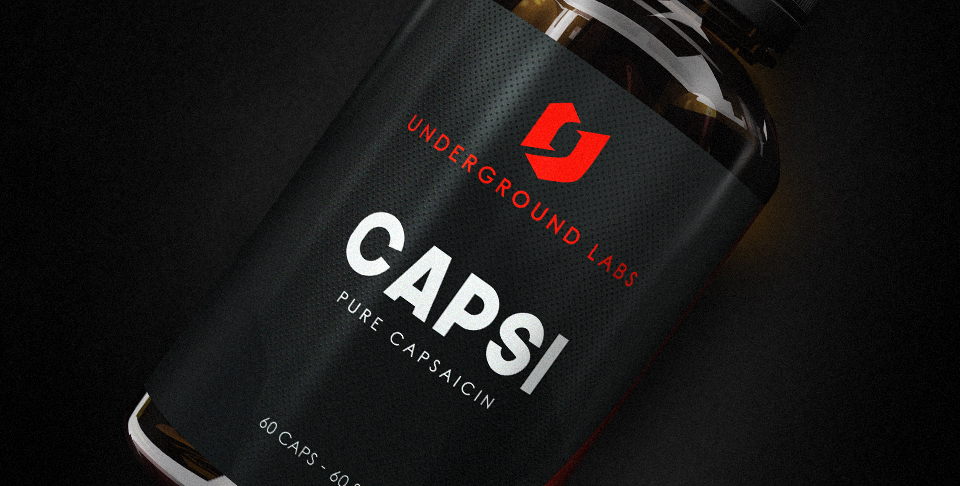What is Capsaicin? (Capsimax®)
Capsaicin is a natural alkaloid that is found in the Capsicum genus (chilli peppers). It is considered an irritant and is the substance that makes your tongue burn while eating a hot curry. However, while some people don't like a spicy meal, capsaicin may actually be helpful for weight and fat loss.
Where Does Capsaicin Come From?
Capsaicin occurs naturally in most chilli peppers in varying amounts, depending on species and growing conditions. These include red peppers, cayenne, jalapenos, pepperoncini, etc. The only member of the capsicum genus without capsaicin is the bell pepper, as evidenced by its lack of "hotness".
Capsaicin Benefits
Capsaicin Benefits for Weight and Fat Loss
Capsaicin has thermogenic properties, which make it attractive as a weight and fat-loss aid. Studies have found that capsaicin supplementation is capable of increasing and maintaining fat oxidation (fat burning) in people (Lejeune et al, 2003). However, what is more interesting, is that if consumed with a meal, capsaicin is capable of increasing total energy use and carbohydrate oxidation, while slowing down lipid oxidation for a short period of time (up to two hours) (Yoshioka et al, 1995). So from this, it seems that short-term consumption of capsaicin acts as a temporary thermogenic and carb metaboliser. However, if used for a longer duration (over months), capsaicin may be able to switch the body towards favouring using fat as an energy source and increasing fat burn.
Capsaicin Benefits for Pain Relief
Capsaicin can also be applied directly to the skin to act as a pain relief agent for muscle aches and sprains. However, over-the-counter creams tend to be low doses and efficacy is only moderate at best. For best results, it has been recommended that prescribed high-dose patches and injectable preparations can be used (Knotkova et al, 2008).
Negatives of Capsaicin and Side Effects
Despite Lejeune et al (2003) observing an increase in thermogenesis among people consuming capsaicin, the subjects did not lose a significant amount of weight compared to the control group. This was attributed to the lack of compliance among the research subjects. Because capsaicin is quite pungent and unpleasant to eat, sometimes causing digestive discomfort, it was found that subjects were only consuming half their dose. This is a potential problem with capsaicin supplementation. High-dose consumption is only suitable for the more dedicated weight loss practitioners.
Although capsaicin is safe, it is still a natural irritant, and at extremely high doses it can be toxic. Avoid capsaicin contact with your eyes, and be sure to wash your hands after handling. There are also known drug interactions. For example, the combination of common high blood pressure drugs, when used with capsaicin causes coughing. Please consult your doctor if you are already on medication before commencing capsaicin use. Also, be sure to let your doctor know of existing capsaicin supplementation. Avoid taking capsaicin if you are pregnant or breastfeeding. Capsaicin is able to pass into breast milk and can make it unpalatable for your infant.
Capsaicin Recommended Dosage and Ingredient Timing
135 mg capsaicin/day has been found to be effective in increasing thermogenesis (Lejeune et al, 2003). At this dose, it may even cause a significant increase in weight loss. Capsaicin may be taken multiple times a day, with meals, or follow the instructions on the product's label.
Capsaicin Supplements
The tricky thing about finding supplements containing capsaicin is that "capsaicin" is not often listed as an ingredient. Luckily Underground Labs has bought out a Capsaicin supplement Capsi. This is a 100% single-ingredient product
Also, often it is the parent pepper that is listed. So if you are looking for capsaicin, look for anything that contains a chilli pepper (eg. cayenne, red pepper, etc). Please note though, that black pepper extract (piperine), which may be helpful in its way, is an unrelated compound.
The easiest place to find formulated capsaicin supplements is in fat burners. Be sure to follow the instructions on the label when using these products.
Some examples include:
- Underground Labs Burn (as Cayenne Pepper)
- Betancourt B-Nox Ripped (as Capsimax, Capsicum Extract)

Stacking Capsaicin
Capsaicin can be stacked with other fat-loss supplements such as fat-loss protein powders and fat metabolisers. One other natural thermogenic that may go well with capsaicin is green tea. Green tea and capsaicin often occur together as ingredients in fat burners. However, because capsaicin is thermogenic, it is not recommended that products containing capsaicin should be used on top of another full-strength non-capsaicin thermogenic product.
Lejeune et al (2003), Effect of capsaicin on substrate oxidation and weight maintenance after modest body-weight loss in human subjects. British Journal of Nutrition, 90: 651-659
Knotknova et al (2008), Capsaicin (TRPV1 Agonist) Therapy for Pain Relief: Farewell or Revival? Clinical Journal of Pain, 24: 142-154
Yoshioka et al (1995), Effects of red-pepper diet on the energy metabolism in men. Journal of Nutritional Science and Vitaminology. 41: 647-756

